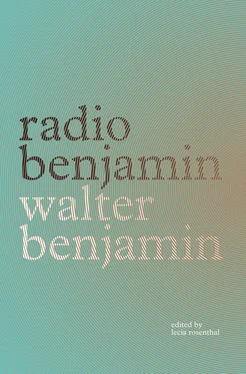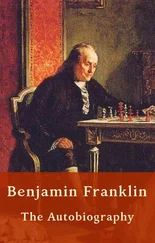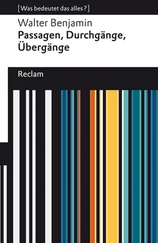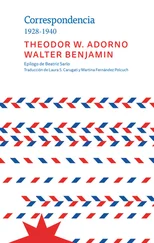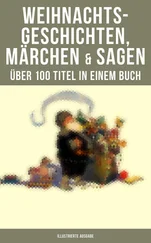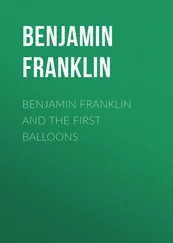As far as I’m concerned, nothing is better than a paper toy, starting with the little folding boats or paper caps, which are usually the ones we encounter first, and onto the insert-books I’d like to tell you about now. Imagine a picture book with just a few pages inside. On the first page maybe there’s a room, on the second a landscape with mountains, fields, and a forest, on the third a city with its streets, gates, public squares, and houses. Now look a little closer and you’ll see that each of these pictures is full of tiny slots: openings between window and windowsill, between threshold and door, between fountain and pavement, between seat and armrest, between river and shore, etc. In the back of such a book there’s a little pocket with all sorts of people, furniture, vehicles, ships, food, and plants, each of which has a little ridge that you can slide into the slots on the pictures. So you can furnish the room in a hundred different ways, decorate the landscape with a hundred different sorts of flowers and animals, and show the city first on a market day and then on a Sunday, and, if you feel like it, you can even have deer and squirrels walking down the street. Sure, books like these no longer exist. But it won’t be long before they’re back again and already you can find some that are just as beautiful. For instance, why not treat yourself to the The Magic Boat by Tom Seidmann-Freud, which works almost the same way as the one I just told you about. 3
Now maybe you’re wondering, what does all this have to do with Berlin? In which case I would beg you to put on your thinking caps when I ask you: where in Germany can you imagine taking a tour through the entire kingdom of toys other than here in a Berlin department store? I’m not saying there aren’t toy stores where you can find just as many things. The big difference is that the department stores simply have more space to put out their giant tables so that nothing remains hidden and anyone with eyes gets to look at everything that would otherwise be stowed away in closets and crates. Mind you, it’s been a long road to arrive at these galleries we are wandering through. Most of all, you must not think the toy began as some sort of invention by manufacturers of playthings. On the contrary, the toy emerged gradually from the workshops of wood carvers and tinsmiths. At first, children’s toys were actually produced by craftsmen in their spare time, since toys are essentially objects from everyday life recreated in miniature. The carpenter would make, by order, tiny furniture for dollhouses, the tinsmith and coppersmith the pots and plates for the doll kitchens, and a potter would make the tiny ceramic ware. In short: each craftsman was allotted his share in the creation of such miniaturized household items. However, in the Middle Ages, strict regulations enforced by trade guilds set limits on each professional craft, making proper toy manufacturing impossible. Each master craftsman was only allowed to make that which fell in his particular domain. The carpenter was forbidden to paint his wooden dolls himself; he had to leave the finishing work to the “bismuth painters,” as they were known, while the chandler had to turn to the carpenter if he wanted his wax dolls or angels to hold some sort of wooden object like a candlestick in their hands. You can imagine how unbelievably laborious it must have been in those days to build a dollhouse when so many different craftsmen had to be involved, and this was true right into the nineteenth century. Hence their great value. Early on, only princes could afford them, and they were used as showpieces in castle nurseries, or sometimes they were on exhibit at fairs for paying customers. We know of one such showing. Around 300 years ago a little old lady came to Nuremberg with the idea of earning some money by illustrating to children the basics of proper homemaking, using a dollhouse in which everything was recreated as true-to-life as possible. I suppose the parents of these kids were taken in by her sales pitch and sent their little girls into her tent. But for the kids it was more fun than anything else. And anyway, in reality the interiors of these houses were not at all true-to-life, but only a series of rooms one after the next, cobbled together just for show. Most dollhouses don’t even have stairs to connect the various stories.
You surely know the so-called Nuremberg toys. Remember your Noah’s Ark, all the tiny painted animals and human figurines? On my tour I was astounded to see how this biblical and pastoral world of toys has grown to include many modern urban scenes. Alongside Noah’s Ark, there are now rental barracks, railway stations, swimming pools, and even Berolina sightseeing cars, complete with dolls dressed as foreign drivers and passengers. In a little while we’ll get to why these are called Nuremberg toys. The truth is that today most of them come from the Ore Mountains and Thuringia. These toys have been manufactured there for several hundred years. Their story once again shows how the manufacture and sale of toys back then differed from that of today. It’s not by chance that the villages where these toys were created lay deep in the forests of Thuringia and Bohemia, where the long winter days, when traffic on the snowed-over streets and icy passes came to a halt, forced the farmers and craftsmen who lived off this traffic in the warmer seasons to find other work to keep them busy. With wood so readily available, naturally they took up carving. At first it was just wooden spoons, kitchen utensils, simple needle boxes and the like. But those with any talent were not content for long, and soon ventured to carve little dolls, small wagons, and animals they knew from their local surroundings. Merchants passing through the area in the summer would buy up these charming and inexpensive works of art to bring home as gifts for their children. The easy earnings appealed to the carvers who, seeking more than just seasonal sales, packed up their goods in baskets and peddled them across the country. Businessmen then began snapping up these toys and selling them all over the world. The dolls would eventually reach Astrakhan and Archangel, Petersburg and Cadiz, even Africa and the West Indies, as sailors took them overseas to trade the colorful little figures with the natives in exchange for jewels, pearls, bronze, and other such valuable wares.
You must be thinking: what a strange toy tour; we’re almost finished and he’s yet to mention either dolls or soldiers. And you would be right. But today he’s dwelt on the more peculiar and unconventional, and so he will continue until the very end. He will tell you what has surprised him most on this tour. It was not a new discovery, but something he had not thought about in an awfully long time: scaly bath toys. On a piece of soft cotton are ducks and goldfish, and in the middle, a ship that is also scaly and comes with colorful metal sails and a magnetic stick that a child can use to steer the boats while his mother washes his hair. The entire thing was coated in celluloid, which made the fish, ships, and ducks look like they were frozen in ice. It reminded me of the smallest and most exciting of toys, those you can’t touch because they’re behind glass, like the ships, crucifixes, and collieries enclosed in sealed bottles. Have you ever seen these bottles? Have you ever racked your brains figuring out how those things get in there? I have, for years. And it took years before I learned how they do it, how sea captains, who bring them home after long journeys, go about creating such things. It’s not sorcery, just patience that is required, the immense patience possessed only by a skipper who, in his solitude at sea, has nothing to miss out on. All the parts of the ship or crucifix, connected by threads, are movable and narrowly packed together so they can fit through the neck of the bottle. Once they are inside, all the pieces and joints are pulled upright with long pins and tweezers until the ship, crucifix, or whatever else takes its proper form. Finally, colored sealing wax is dripped to make the waves or rocks and to permanently set the little houses or figurines. The inside of the bottle looks like something out of the magical land of Vadutz, as described by the poet Clemens Brentano: “All the magical mountains from storybooks, the world of fables and fairy tales, Himmelaya, Meru, Albordi, Kaf, Ida, Olympus, and the Glass Mountains lie for me in the little land of Vadutz.” 4In his imagination Brentano brought together all the toys that he loved into one country that he called Vadutz. He tells us this in the introduction to his most wonderful fairy tale: Gockel, Hinkel, and Gackeleia. Now that our toy tour is finished, you have something to wish for on your next birthday. But what I wish from you is that you remember our tour, if sometime later you happen to read the story of Gockel, Hinkel, and Gackeleia.
Читать дальше
